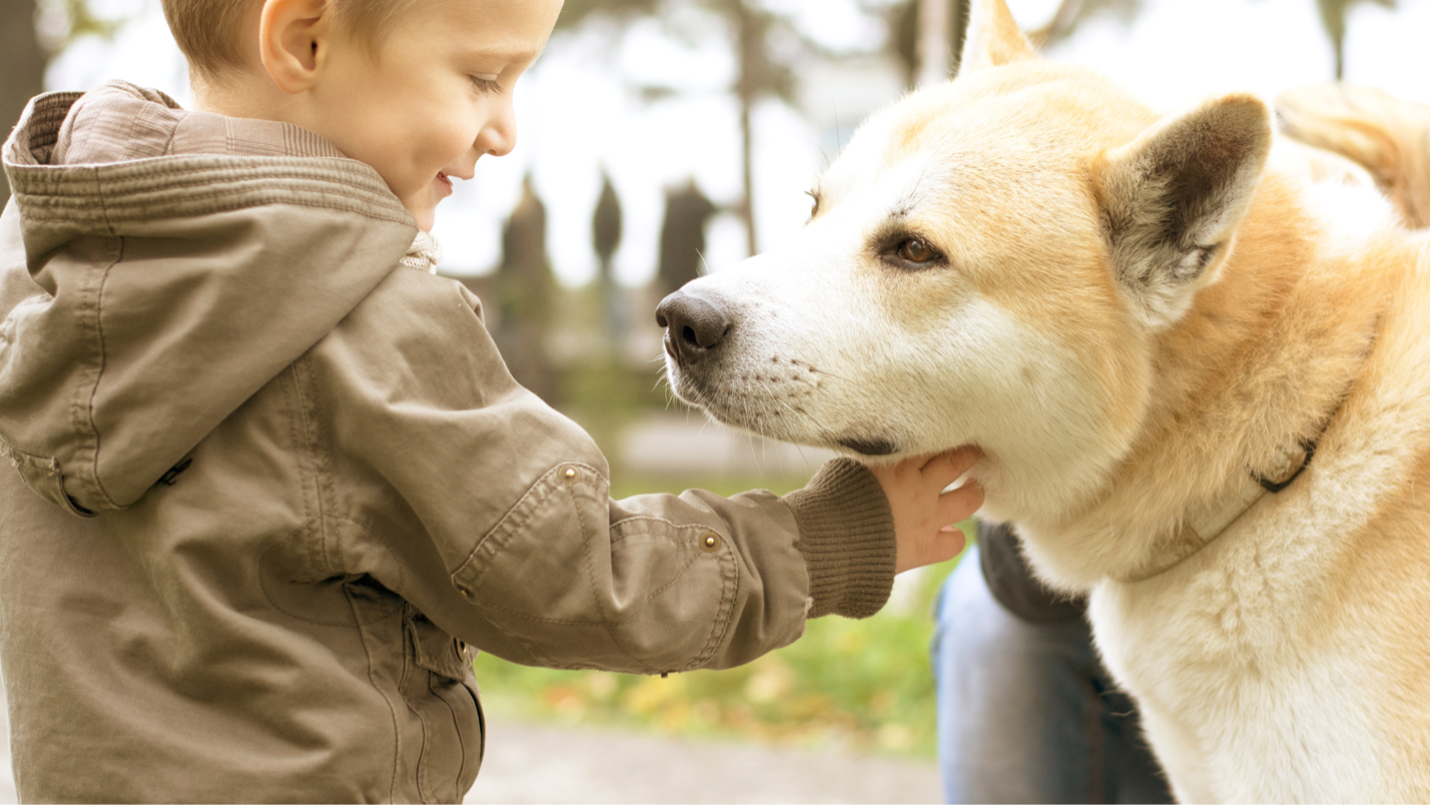The second week of April is Dog Bite Prevention Week. Although a dog is man’s best friend, that doesn’t mean we’re always on the same wavelength. It isn’t a requirement for dog owners to be experts in canine behavior before bringing home a puppy. The CDC states 4.5 million dog bites occur annually. It has been estimated that approximately one half of school aged children have been bitten by a dog. Boys between the ages of 3 and 5 are most likely to be bitten. The dogs involved are almost always known by the children, they are very rarely strays or random attacks. Half of the attacks were provoked by children. Let’s do our best friends and our children a favor and learn how to speak a dog’s language.
Many American dogs suffer from anxiety. Dogs with anxiety can be triggered by owner separation, loud noises, overstimulation or a feared event (such as a car ride). Commonly exhibited behaviors of children such as sitting on a large dog, pulling his ears or tail, giving a “hug” or getting too close to the dog’s face can also increase canine anxiety. Three quarters of reported dog bites involved a high anxiety pet. Anyone who will spend time with dogs must learn to recognize the signs of an anxious animal. Common signs of a destressed pet include lip licking, giving the “side eye” or “guilty eye”, showing the whites of their eyes, yawning, panting, drooling, avoiding touch, hyperactivity, tail tucking, hiding, growling, barking, whining, raised hackles (the hair on the back of the neck),” freezing”, rolling over in submission, crouching or pacing. Be very careful putting pressure on a dog who is exhibiting any of these behaviors. When you ignore the body language of an anxious dog, the dog may feel forced to bite in self-defense. Dogs may also guard resources such as their bed, food, toys, or family members.
Ultimately, it is the responsibility of the adults in the home to be aware of the dog and child’s behavior and tendencies. Developmentally, children under the age of 6 are not able to recognize the visual warning signals exhibited by a dog. The adult should establish himself as alpha in the home. Clear commands and expectations for both the dog and the child decrease anxiety. Dogs can be trained to sit, and calmly focus on their owner when feeling anxious. Enlist the help of a trainer if you are struggling to establish control in your home. Adults must be able to recognize a dangerous situation and separate them before a situation escalates.
It is important to recognize any individual tendencies your dog may exhibit due to his breed or age. For example, herding breeds were developed to chase, stalk, nip and vocalize to move livestock in the direction determined by the dog’s handler. They are high energy, intelligent dogs who need daily exercise, mental stimulation and training. Children, other household pets, bikes and cars are commonly herded in situations where the dogs do not have other mental and physical stimulation. Smaller breeds, like chihuahuas may feel threatened by the size and fast movement of children. Many older dogs or chronically ill dogs may feel the need to bite to protect themselves. Many may have aches and pains from arthritis and other ailments and nip if a child accidentally steps or falls into them.
Chances are, if you’re reading this blog post, you love pets. Although no one wants a child to be injured by a dog, biting is detrimental for the dog as well. A biting dog is a stressed dog. A dog involved in a bite incident may be euthanized or surrendered to a shelter. Let’s do what we can to increase education and decrease dog-bite wounds this year.
Your Friendly Team,
